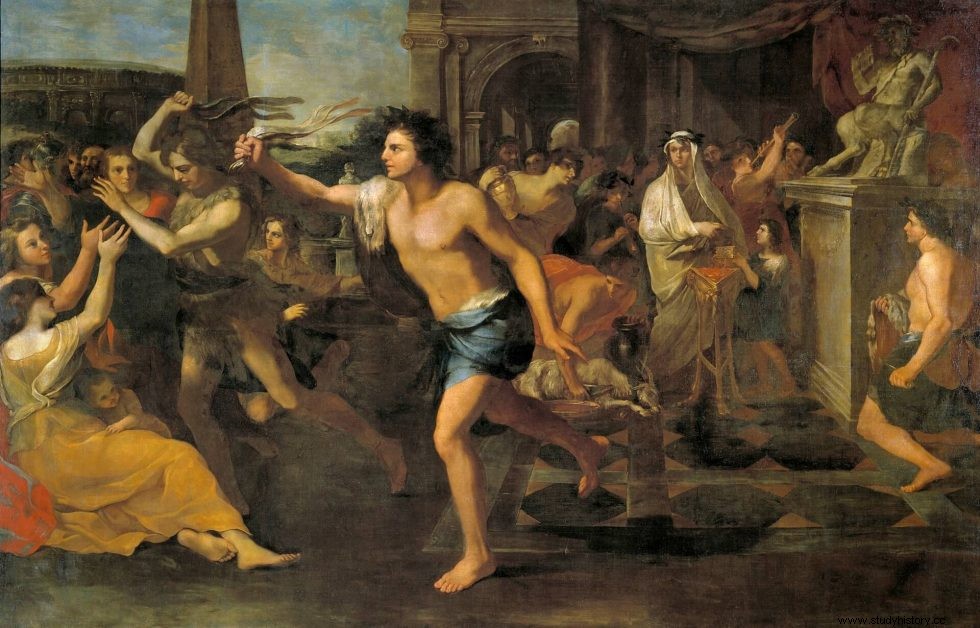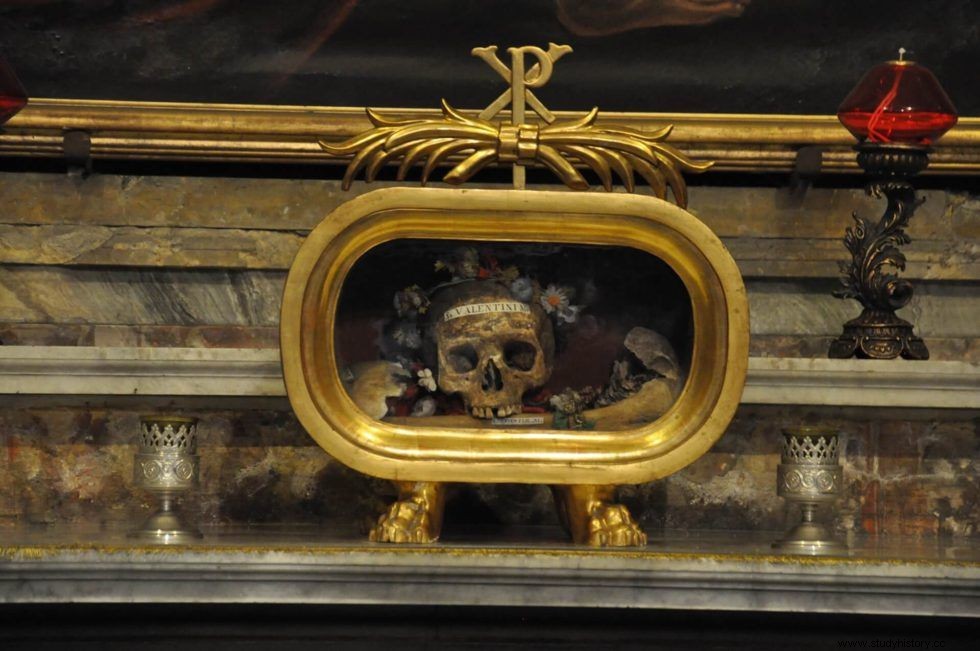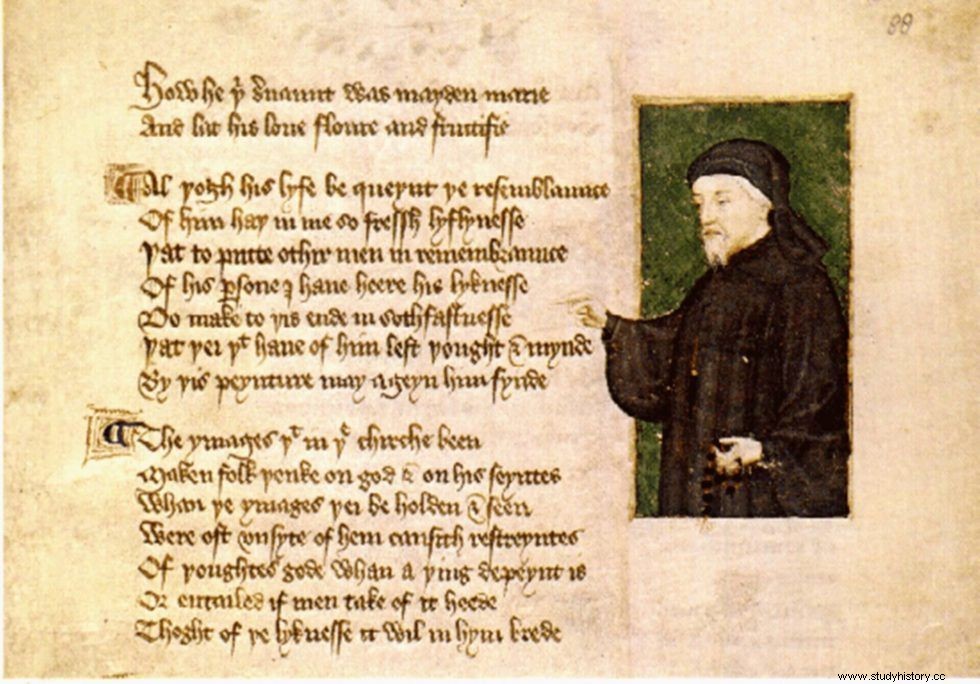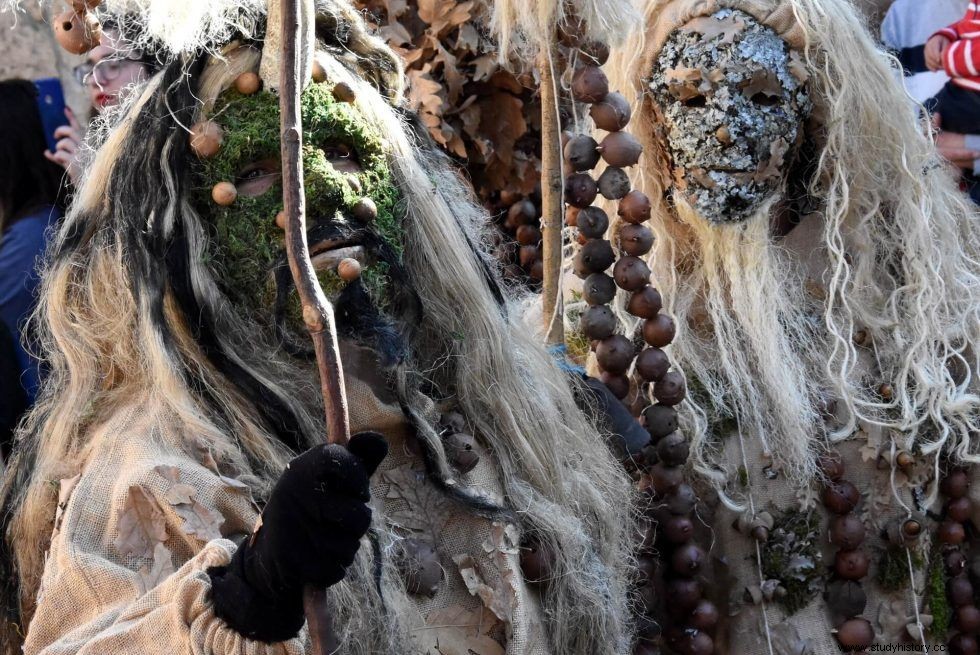
The Feast of the Lupercalia it was one of the most curious and popular in Rome, although we do not know exactly what divinity was honored in them:among the possibilities are Lupercus (as an epithet for Faunus), Februus or Juno. In them, young men from the elite offered goats and dogs and then ran through the city, naked and smeared with oil, carrying the shredded goat skin and whipping those who crossed their path with them. These lashes were associated with fertility, and were especially "indicated" for women. Its origin seems to go back to the roots of Rome or beyond, and Cicero said that it was before civilization and laws.
It was celebrated on February 15, it was related to fertility and had a certain erotic touch … it seemed that the connection with the lovers' party was clear. In addition, there is a letter (actually an open text) from Pope Gelasius I (492-496) where he criticizes the fact that the Lupercalia were still celebrated. , and prohibiting them. Thus, Christianization seemed plausible. The small problem is that the theory, which emerged between the eighteenth and nineteenth centuries, has been repeated without paying much more attention to the subject. Furthermore, although Gelasius criticizes the festivals as degenerate and pagan, he does not seem to institute any other festivals in their place. Moreover, in the historical calendar of Polemio Silvio, in the 5th century, the Lupercalia still appear .
Before going into that, in any case, we must see who this saint is, named Valentine. The first "lives" are medieval, with hagiographies that do not seem to correspond to real acts of martyrdom. The stories seem to have been built between the 6th and 7th centuries, on the memory of some martyr, adding topics and fragments of martyrdom acts. Even so, it seems that there is archaeological and textual evidence to think that in the fourth century there was already a cult of one or several saints named like that, and it seems that Pope Julius I (III century) built a basilica for him in Rome.
The story of Valentine
In fact, we keep TWO different stories , which share some details (such as execution on February 14), but differ in others. One would have been a Roman priest, executed by Claudius (probably Claudius II, from the 3rd century) and buried on the Via Flaminia, who would have preached and performed miraculous cures. The second would be the bishop of Terni, who would also have miraculously cured a child, and would have suffered martyrdom shortly after.

Bede, in the eighth century, mentions both acts , considering them separate saints… despite the fact that both died on February 14 and they were called Valentín. So he just added reviews of both, without asking any more questions. From the fourth century onwards the cult of him (more or less unified) seems to have spread, and records are preserved in various sources and churches under his patronage. In fact, today numerous churches and cities claim to have the remains of Saint Valentine, from the obvious Rome (at Santa Maria in Cosmedin, famous for the Bocca della Verità ) and Terni, to Dublin, Madrid or Almería, passing through the head that Emma of Normandy gives to the New Minister, in Winchester, and which becomes one of her most popular relics.
The problem is that, until the fourteenth century, this saint had hardly anything to do with the realm of love. There are some exceptions, such as the case of Eugene Vulgarius who, in a 10th-century calendar, associated Valentine with spring and fertility . Also Christine de Pizan, better known for the "Quarrel of Women", linked Valentine's Day with the beginning of spring and love. And that is perhaps the point, more than a direct survival of the Lupercalia , which led Geoffrey Chaucer to choose Saint Valentine as the patron saint of birds, spring and lovers in the 14th century.
This English poet, author of the well-known Canterbury Tales , in his (perhaps somewhat less well-known) work Parlement of Foules , started an unstoppable tradition that unites Valentine's Day with couples and love.

Although this association seems strange, the truth is that During the Middle Ages, despite the fact that February is a winter month, the entrance of spring was marked between February 7 and 22. Some calendars mark those days, too, as the ones when the birds begin to sing.
Other authors contemporary to Chaucer, possibly influenced by him, also began to use the image of Valentine as a kind of Cupid, a patron saint of lovers, something that began to catch on quickly in the rest of society and we can find examples in the French poet Martial d'Auvergne, in Shakespeare or in John Donne. The holiday, as we know it today, has been promoted in Western society as a day of celebration and exchange of gifts, something to which the various companies that produce chocolates, flowers, cards and jewelry have happily joined.
Lupercalia -Valentine's day, a possible connection?
Although there does not seem to be a direct connection between the Lupercalia and Valentine's Day (apart from the relationship of both with the erotic-festive and with the beginning of spring), this does not mean that there is no connection between the Roman celebration and other related festivals, especially with the Carnival . Nor does poor Gelasius seem to have had a meteoric success in convincing his contemporaries to suppress these festivities and their associated elements. In fact, some sources mention their celebration in Constantinople as late as the 10th century, and it is possible that they survived, transforming and adapting, much further.
In fact, in his letter he refers to these holidays as the celebration of “a monster composed of I don't know what mixture of beast and man” (chap. 23), the god Febraius , and the absence of nudity. The party he describes resembles the modern carnival, with insults to authority, games and erotic songs. In addition, he warns that they are now celebrated by common and humble people, becoming popular, and a progressive theatricalization can be seen. So, yes, we can see the connection between the Greek Dionysian festivals or the rites of the Lupercalia Roman festivals with traditional festivals related to masks, wild animals, races and whipping, celebrated on these dates, between February and March. These celebrations would have the mission of expelling demons or winter, and promoting fertility. In some cases they have continued to adapt, as in that of the Busójárás, a party with people of Croatian origin who live in Mohács (Hungary), in which the expelled "evil" came to be represented by the invading Turks.
Likewise, masked parties, such as the Botargas in Guadalajara , are distributed throughout the Peninsula. In addition, February, in Basque, is the "month of the wolves", and there are several traditional festivals related to them in this region. Although this folklore has been lost in many places, some of these peoples have struggled in recent years to make visible, recover or maintain their traditional masked characters, who continue to be part of their collective imagination. Its aesthetic, ethnographic, historical and civic value is undeniable. Thus, in Ávila, for example, a meeting is held annually, under the name of Mascarávila, in which the different towns of the region come with their different masquerades.
Bibliography
López-Cuervo Garrido, M. (1995):“A letter from Pope Gelasius (492-496) against a popular festival”, Anthropology Gazette , 11. Available at http://www.ugr.es/~pwlac/G11_14Mercedes_Lopez_Cuervo.html
Maldonado, L. (1975):Popular religiosity. Nostalgia for magic . Madrid:Cristiandad Editions.
Méndez Santiago, B. (2019):“The god Faun and the ritual of the luperci. Representations of male nudity”, Arys:Antiquity:religions and societies , 17, p. 161-190
Oruch, J. B. (1981):“St. Valentine, Chaucer, and Spring in February”, Speculum , 56(3), p. 534–565.
Mascaravila

